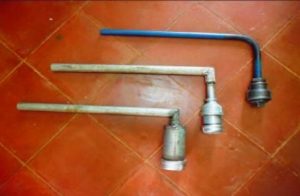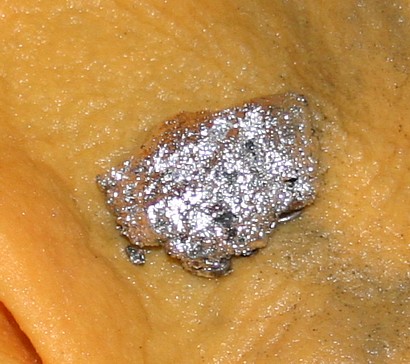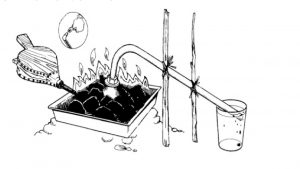
Three different models of mercury retorts
Artisanal gold mining, which takes place on a fairly large scale in the “mining triangle” near Siuna in the North Atlantic Autonomous Region (RAAN) of Nicaragua, provides many families with a source of income. Miners extract gold manually from abandoned mines by gathering what is basically sediment with small amounts of gold in it and then treating it with mercury in a process called amalgamation. When gold particles are brought into contact with mercury, the two combine to form amalgam, which is just a simple alloy. Amalgamation is really only useful in artisanal mining since it is only effective for small pieces of gold.

Amalgamation of gold and mercury
According to the EPA, about 20% of the world’s gold is produced by artisanal miners, who largely use this method because of its relatively low cost and lack of necessary equipment. Unfortunately, the use of mercury in the process presents a danger to human health both locally and globally. The World Health Organization (WHO) warns that “mercury may have toxic effects on the nervous, digestive, and immune systems,” in addition to having a detrimental impact on the “lungs, kidneys, skin, and eyes” (Mercury and Health 1). The WHO considers mercury to be one of the primary ten chemicals that pose a major threat to public health. So why would miners continue to expose themselves to such a risk?

artisanal mining in Nicaragua
Initial research suggests that most miners know about the harmful effects of mercury, but that the perception that there are no cheap methods of cleaning up mercury prevents miners from incorporating more safety measures into their work. A mercury retort, which is a fairly simple device that captures and condenses the mercury vapors created through amalgamation, could be adopted in most cases of artisanal mining to mitigate both the negative health effects and resources, namely mercury, often lost to this process. Mercury retorts could be built in Nicaragua and probably for as cheap as $7. In an ideal world, mercury would be phased out of the gold mining process, but until that is realist, we should work to spread the knowledge about the existence of low-cost safety measures that have both financial and safety benefits.
Diagram of a mercury retort in action
Sources:
http://nevada-outback-gems.com/Reference_pages/Amalgamation.htm
https://www.epa.gov/international-cooperation/reducing-mercury-pollution-artisanal-and-small-scale-gold-mining
http://www.who.int/mediacentre/factsheets/fs361/en/
http://www.diva-portal.se/smash/get/diva2:754777/FULLTEXT01.pdf
Gold Fever: Artisanal and Industrial Extraction in the Nicaraguan Mining Triangle

